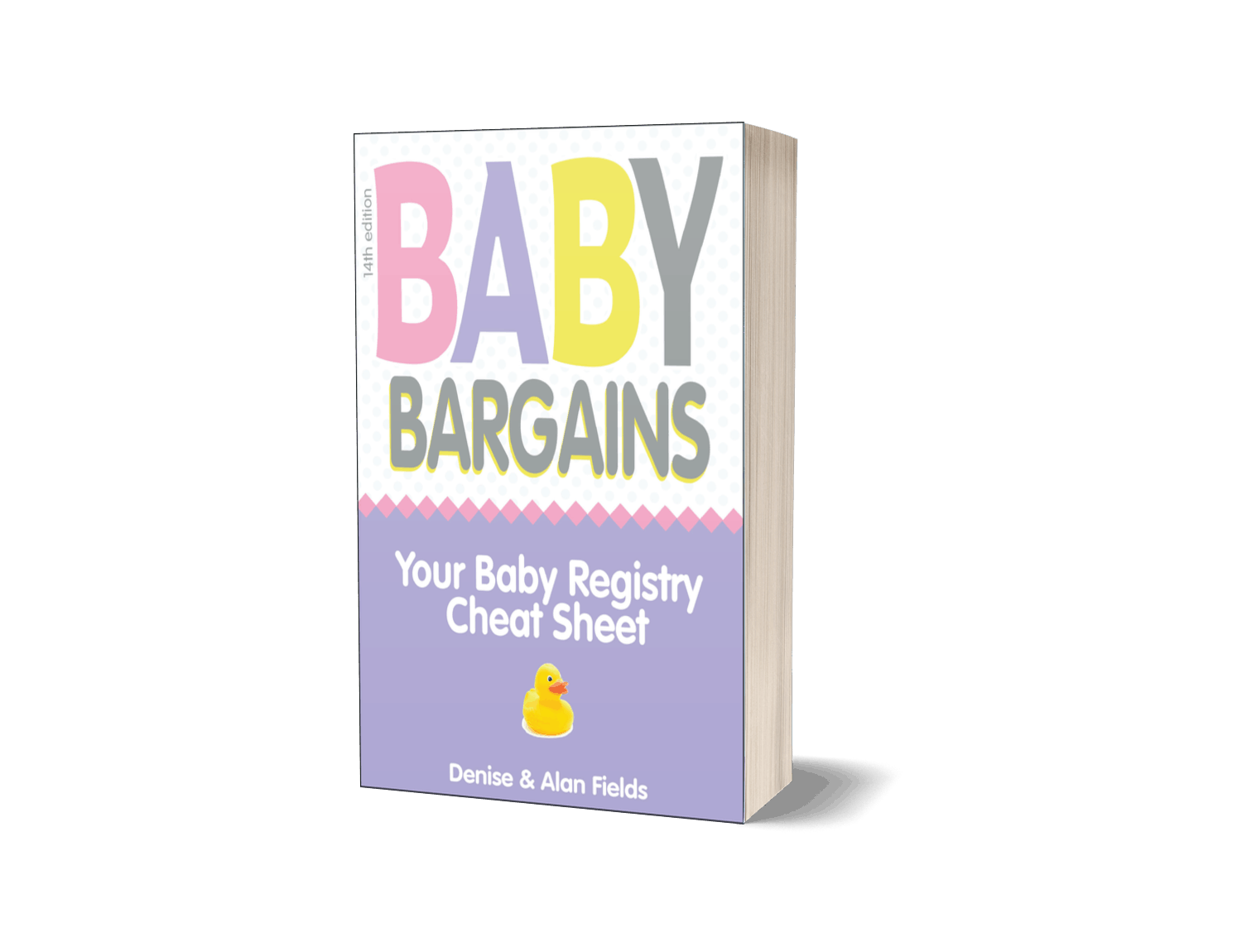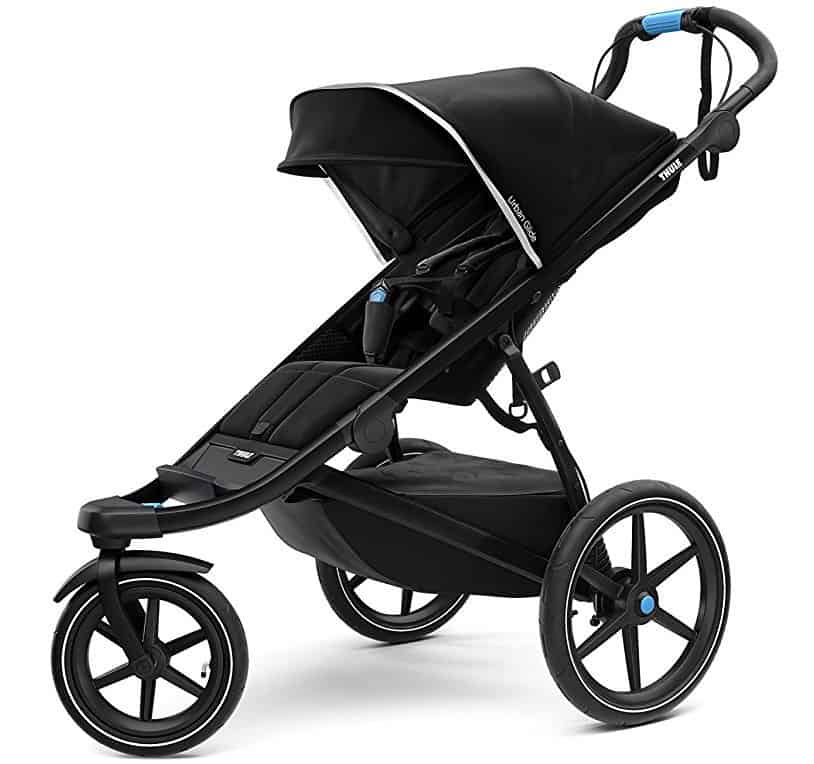
Best All-Terrain Stroller 2025
Best All-Terrain Stroller 2025
Last Updated: . Best All-Terrain Stroller 2025. After researching 17 all-terrain strollers, the crown for best all-terrain stroller goes to the Thule Urban Glide 2 (25.3 lbs.).
New to stroller shopping? Read our 7 Things No One Tells You About Buying a Stroller.
We judged the Urban Glide 2 superior when it came to maneuverability and tracking (it has a turnable wheel that can be locked in two positions). The fold is also simple: flip open the secret compartment at the footrest, twist the release knob and voila! The stroller folds quickly.
As you’d expect in a premium all terrain stroller, the Thule Urban Glide also features a height-adjustable handle, robust wheel suspension and an extendable canopy with air mesh ventilation. New for 2019, Thule will have a bassinet accessory as well.
One cool feature that the Thule has that the competition lacks: a covered storage basket. The zip-top cover keeps your items dry in case it is raining or there is mud on the trail—very nice!
FYI: There are currently two different Urban Glide models on the market—the original and the update version released in 2018 (Urban Glide 2), which adds several new features including an innovative twist-activated handle brake. Scroll down for more details on differences between the original and revised model, as well as downsides to the Urban Glide 2 (no stroller is perfect of course).
A double version of the Urban Glide 2 is also available. Best All-Terrain Stroller
The Best All-Terrain Stroller
Thule Urban Glide 2
Thule’s Urban Glide 2 combines the best maneuverability in class with 16″ air-filled rear tires and a swivel front wheel that can be locked for jogging. Excellent quality and features.
Differences between the Urban Glide and Urban Glide 2
Here is an expanded overview of features on the Urban Glide 2:
• New integrated brake. The Urban Glide 2 added a brake that is integrated into the handlebar—twist the blue portion and the stroller slows, which is helpful when going down a hill.
• Extended canopy. Thule redesigned the Urban Glide 2’s canopy to offer an extension with mesh ventilation in back (the new version still has the front sun visor too).
• New accessories including a bumper bar and rain cover as well as car seat adapters for the Maxi Cosi and Chicco infant car seats. The lack of these accessories was a major negative for the original Urban Glide.
• Secure folding strap. When folded, a new catch ensures the stroller stays folded.
Otherwise, the Urban Glide 2 is very similar to the original model, which is still for sale on Amazon as of this writing.
The Thule Urban Glide has a silver frame—although there is one version with a jet black frame for an additional charge. Quite spiffy. Best All-Terrain Stroller
What we liked: Thule Urban Glide 2 vs. the competition
Unlike cheaper all-terrain strollers, the Thule Urban Glide 2 features 16″ air-filled rear-wheels—this is key for trail hiking or snowy days. The rear-wheel suspension also helps smooth out bumps. These are features lacking, for example, on the Graco Fastaction Fold Jogger.
Another key difference: the Thule has a 75 lb. weight capacity; the Graco is only 50. That’s important because you often use a jogging stroller with older children on longer outings—and a 75 lb. weight capacity would work with kids up to age 7 or 8.
Finally, compared to the BOB Revolution, the Thule Urban Glide 2 has an easier, one-step fold, in our opinion.
What’s not to like: downsides but not deal killers
At this price, the Thule Urban Glide 2 is at the top end of the all-terrain price range—and to make matters worse, items like a parent console, bumper bar or child snack tray are optional accessories. That will push the price of this stroller close to $550.
While the fold on the Urban Glide 2 is quick, it is quite bulky when folded and will take up a good amount of trunk real estate. Yes, that’s true for other all terrain strollers, however . . . to mitigate the bulkiness, the side wheels release for more compact storage.
We wish the Urban Glide 2 would stand when folded—instead, it folds down to the ground, which guarantees the fabric will get dirty/muddy too easily.
Unlike some competing strollers, the Thule Urban Glide 2 doesn’t work out of the box with any infant car seats—you have to buy a separate adapter to use this stroller with an infant car seat. Graco Fastaction Fold Jogger, for example, works out of the box with most Graco infant car seats.
While we liked the reflective fabric on the Urban Glide 2, we thought Thule could have hidden the brake wires that are visible on the handle bar. That’s a small quibble, of course, but when you are paying $500 for a stroller, this would make the Urban Glide look more sleek—and less like a mad scientist experiment.
Finally, the brake on the Urban Glide 2 is not flip-flop friendly—to release it, you have to push up from under the button, which will most likely mess up that pedicure.
Here’s a quick visual overview of the Thule Urban Glide 2 features: Best All-Terrain Stroller
est All-Terrain Stroller
Why Trust Us
We’ve been rating and reviewing strollers since 1994. In addition to hands on inspections of strollers, we have also visited manufacturer facilities and met with safety regulators—and when we travel, we pay our all of our own expenses. We look to our reader feedback to give us a real world perspective on strollers—our message board on strollers has over 27,000 (!) threads. We also evaluate consumer reviews posted on sites like Amazon.
Here’s another key point: we don’t take money from the brands we review. No free samples, no sponsors, no “partnerships.” Baby Bargains is your independent and unbiased source for expert baby gear reviews. We’ve been writing and reviewing baby gear since 1994. Yes, that long!
Learn more about our work and how to support our site.
How we picked a winner
We evaluated strollers with hands on inspections, checking seats for ease of use (folding and unfolding, etc.). We also gather significant reader feedback, tracking strollers on quality and durability. Besides interviewing parents, we also talk with engineers and industry experts.
We’ve been rating and reviewing strollers since 1994. During that time, we have also visited manufacturer facilities and watched them test strollers. While we don’t personally test strollers, we carefully check our reader feedback with safety groups and the government.
7 Things No One Tells You About Buying Stroller!
1. What’s your stroller lifestyle?
Before you fall you in love with a designer stroller, ask yourself HOW you will be using a stroller. Yes, you.
Think of strollers as tools—the wrong tool for a job isn’t going to help, no matter how shiny it is. It’s the same for strollers.
Because we all live in different environs and want to go varied places, the key to stroller happiness is to understand how different stroller options fit your lifestyle. Hence, the perfect stroller for hiking in Colorado isn’t the right one for a simple spin around the mall in Miami Beach.
Climate plays another factor—in the Northeast, strollers have to be winterized to handle the cold and snow. Meanwhile, in Southern California, full canopies are helpful for shading baby’s eyes from late afternoon sunshine.
2. The perfect stroller doesn’t exist.
Your stroller needs will change over time. Babies/toddlers use a stroller from birth to age four and sometimes beyond. The perfect stroller for a newborn isn’t necessarily great for a toddler—although some strollers make a valiant effort at bridging the years.
And what if you add a second child in the mix?
The take-home message: no one stroller can meet all these needs. Most parents end up with more than one stroller. Let’s review over the stroller landscape.
3. There are six types of strollers on the market…
We kid. Here are the six basic styles of strollers: umbrella/lightweight strollers, full-size strollers, multi-function strollers, jogging (or sport) strollers, all-terrain strollers and travel systems. Here’s a quick look see:
- Umbrella/lightweight strollers are generally under 20 lbs. in weight. Some feature two handles and a long, narrow fold (like an umbrella; hence the name!). Most umbrellas strollers are very cheap ($20 to $40), although some upper end manufacturers have spruced them up to sell for $100 to $300 (UPPAbaby and Peg Perego have “luxury” umbrella strollers). Premium lightweight strollers boast features like extendible canopies, storage baskets, and high quality wheels. Prices range from $150 to $300. Because seat recline can be limited, many umbrella/lightweight strollers are designed for kids six months old and older.
- Full-size strollers used to be called carriages or prams. These strollers are more like a bed on wheels with a seat that reclines to nearly flat and can be enclosed like a bassinet for newborns. All that stroller goodness comes at a price: hefty weight, as much as 30lbs. As a result, getting a full-size stroller in and out of the vehicle trunk can be a challenge. Entry level full-size strollers start at $200, but these can top $1000. In recent years, full-size strollers have fallen out of favor, replaced by . . .
- Multi-function strollers work from infant to toddler with either an infant car seat adapter or bassinet accessory for newborns. Some multi-functions are even expandable into a double stroller with a second seat attachment. Expect to pay $300 to $1000 for multi-function options (accessories like second seats are almost always an additional cost). This stroller type has increased in popularity in recent years, as parents increasingly have kids that are close in age.
- Jogging strollers feature air-filled, bicycle-style tires and lightweight frames perfect for jogging or brisk walks on rough roads. The best strollers for running have a fixed front wheel for stability. Jogging stroller with lightweight aluminum frames usually run $300 and up although there are some cheaper, steel framed options on the market too.
- All-terrain strollers are eclipsing jogging strollers for all but the most devoted runner. In fact, they often look like joggers but have a swivel front wheel. Big tires take to hiking trails better than typical stroller wheels, but these strollers are bulky and heavy. And expensive: they can run more than $400 for popular brands.
- Travel systems combine a stroller and infant car seat which snaps into the stroller. Typically sold at discount and big-box stores, travel systems are aimed at first-time parents and gift givers. Most feature basic infant car seats and full-size strollers at prices that range from $200 to $300. Travel systems have waned in popularity in recent years as more lightweight strollers have added infant car seat compatibility/adapters.
4. Beware these common stroller safety hazards.
Just because a stroller is on the shelves at the Baby Megastore doesn’t mean it is safe. Twelve thousand babies each year are injured by strollers, according to the most recent government safety data.
Here are our top safety tips:
- Never hang bags from the stroller handle. Yes, it is tempting to hang that diaper bag or purse off your stroller handles. The danger: your stroller can tip backwards—and even if your child is in the five-point harness, injuries can still happen. Solution: put that purse in your stroller’s storage basket. Or use a backpack diaper bag.
- Don’t leave your baby unattended while sleeping in a stroller. Newborns, infants and toddlers all move around when they’re sleeping. Injuries have occurred when babies creep down to the strap openings, so keep an eye on them. Or take a baby out of a stroller and put them in a full-size crib for naps.
- Don’t trust your brakes. The best stroller models have brakes on two wheels rather than one. But even if a stroller has the best brakes on the planet, never leave a stroller unattended on an incline with your baby inside.
- Follow the weight limits. Forty pounds is typically the maximum for most strollers.
- Jogging strollers are best for babies over one year of age. Pediatric experts tell us the neck muscles of infants under one year of age can’t take the bumps of jogging or walking on rough terrain.
- Fold and unfold your stroller away from your baby. The opening/closing mechanisms of a stroller can be a pinching hazard, so don’t open or close your stroller with baby nearby. Graco recalled over 5 million strollers in 2014 for just such hazards.
5. The secret to a smart stroller test drive: add weight.
Don’t test drive that stroller empty. Take a backpack and put in about 20 lbs. worth of books. Stick that in the stroller seat and you’ll see how that stroller actually steers/handles with a baby. And yes, practice folding and unfolding the stroller with the backpack in your arms!
6. What stroller features really matter . . . for babies.
The Dreaded Wall of Strollers—more than one parent-to-be has been reduced to tears staring at a baby store’s mind-boggling display of 37 stroller models. So let’s break down what’s REALLY important when stroller shopping for baby:
- Reclining seat. If you plan to use this stroller from birth, the seat must fully recline. That’s because babies can’t comfortably ride in a sitting position until around six months. And most newborns spend their time sleeping—seat recline is a necessity.
- Extended canopy. There are three types of stroller canopies: skimpy, extended and fully enclosing. Skimpy canopies only block the sun if it is directly overhead—great if you live at the equator. For everyone else, an extended canopy (also called extended sunshade) are better at blocking all sun angles. Baby Jogger’s canopies are a good example of extended canopies (see stroller at top of this page). The best canopies have multiple positions for flexibility. Fully enclosing canopies go a step further—they completely block out the sun from a stroller. These are great, but somewhat rare on the market. If you live in an area with active mosquitoes, a bug net accessory is highly recommended. Here’s an example from Baby Jogger for their Select stroller:
- All wheel suspension. Stroller wheel suspension works like your car’s shock absorbers, smoothing out life’s little (and big) bumps.
7. What stroller features really matter . . . for parents.
- It’s all about the storage. Like napkins and toddlers, you can never have enough. We’re not just talking about the size of the storage basket (but that helps). It’s HOW you access the basket, especially if the seat is reclined. The best strollers add storage in areas you wouldn’t think—on the hood, the back of the seat, a storage compartment with lid in a parent console for your phone and so on.
- The right wheels. Going for a nature walk on a dirt trail? Air-filled 12″ rear tires are best. Navigating tight spaces at the Pikes Place Market in Seattle? Small 6″ wheels enable tight turns.
- Removable seat pad for washing. Crushed-in cookies, spilt juice and the usual grime can make a stroller a mobile dirt-fest. Some models have removable seat cushions that are machine washable—other models let you remove all the fabric for washing.
- Reversible seat. When baby is young, you can have your child face you. Then when your toddler wants to see the world, the seat flips around.
- The one-hand, flip flop friendly, standing fold. The fewer the steps and hands you need to fold a stroller, the better. The best models have one-hand folds that stand when collapsed. If your stroller has a foot brake or release, make sure you can do this in a flip flop—and the pedal doesn’t mess up a pedicure.
- Height adjustable handle. If you and your partner are two different statures, an adjustable handle is a must have.
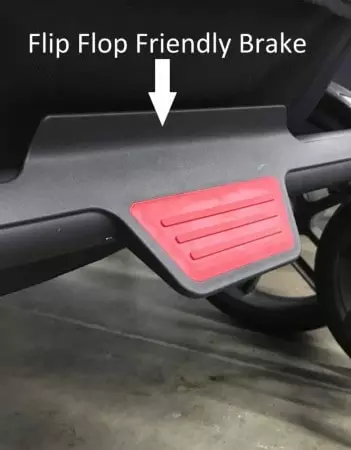
A flip-friendly brake allows you to set and release the brake with the same motion. No messing up the pedicure!
Best All-Terrain Stroller
Eco-friendly stroller fabric certifications
There are three international organizations that test and certify textiles to meet environmental standards: OEKO-TEX, Global Organic Textile Standard (GOTS) and IVN Naturextil. All three of these certifications are optional—there is no legal standard for organic, non-allergenic, chemical free textiles in the US. Many of the stroller brands that are certified are European, with only a few US brands certified. Here’s a bit about each of the three organizations.
- OEKO-TEX is a German organization that offers “Standard 100″ certification program for textiles at all steps in the manufacturing process. “Products marked with the label ‘Confidence in textiles (Standard 100)’ provide effective protection against allergenic substances, formaldehyde, heavy metals such as nickel or for example forbidden plasticizers (phthalates) in baby textiles,” according to OEKO-TEX’s web site.OEKO-TEX offers a second certification called Green by OEKO-TEX, which means the “materials (were) tested for harmful substances,” the product was “made in environmentally friendly facilities” and it was “made in safe and socially responsible workplaces.”
- GOTS (Global Organic Textile Standard) certifies textiles as organic. To meet their qualifications, “only textile products that contain a minimum of 70% organic fibres can become GOTS certified. All chemical inputs such as dyestuffs and auxiliaries used must meet certain environmental and toxicological criteria. The choice of accessories is limited in accordance with ecological aspects as well. A functional waste water treatment plant is mandatory for any wet-processing unit involved and all processors must comply with minimum social criteria.” Beyond using organic materials, companies must also be socially responsible to their workers and the community.
- Textile Exchange. Previously referred to as the Organic Exchange (OE) Standard, the international Textile Exchange certifies textiles according to their Organic Content Standard (OCS). They verify the steps in the supply chain to make certain the materials used in end products like diapers are sustainably sourced/grown, processed and manufactured.
There are only a few stroller manufacturers we can find with one of these international certifications. These companies typically sell strollers with fabric that is conventionally grown as well as organic, so you’ll need to check their web sites to see which models feature certified textiles:
Bumbleride (OEKO-TEX)
Orbit (OEKO-TEX). FYI: Orbit has discontinued all their strollers, but you may see them on eBay and second hand.
Nuna (OEKO-TEX)
The Best All-Terrain Stroller
Thule Urban Glide 2
Thule’s Urban Glide 2 combines the best maneuverability in class with 16″ air-filled rear tires and a swivel front wheel that can be locked for jogging. Excellent quality and features.

BabyBargains.com is a participant in the Amazon Services LLC Associates Program, an affiliate advertising program designed to provide a means for sites to earn advertising fees by advertising and linking to Amazon.com and its related sites. As an Amazon Associate, I earn from qualifying purchases.


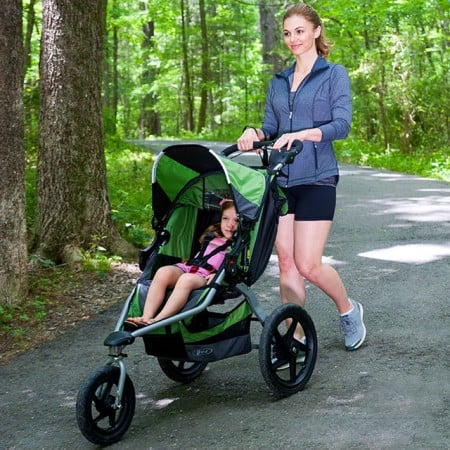

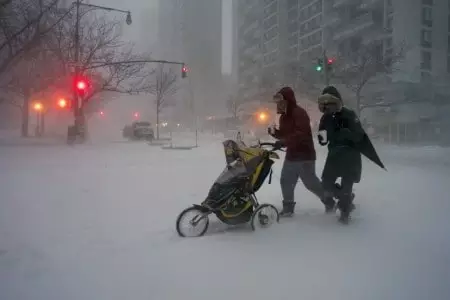
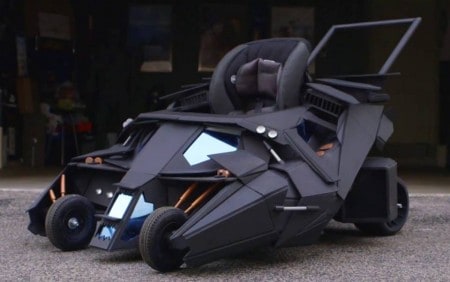
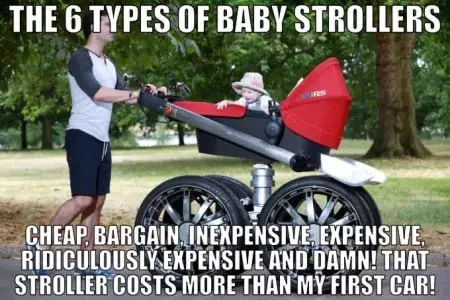

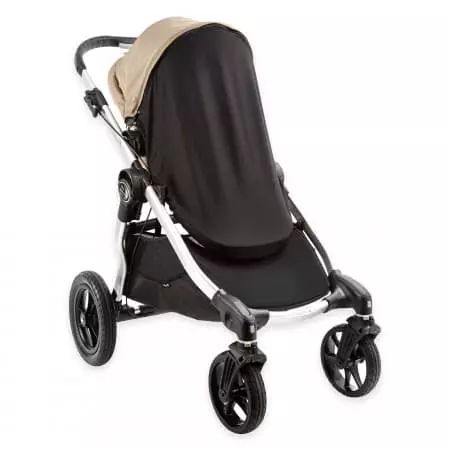
 We obsess over gear for families and the home . . . so you don’t have to. Baby Bargains has one mission: help you find the best gear for your family with unbiased reviews by experts with 20 years of experience. At prices that don’t break the bank. When you purchase a product from links on this site, we make a small affiliate commission. Learn more
We obsess over gear for families and the home . . . so you don’t have to. Baby Bargains has one mission: help you find the best gear for your family with unbiased reviews by experts with 20 years of experience. At prices that don’t break the bank. When you purchase a product from links on this site, we make a small affiliate commission. Learn more 
